Is Covid-19 Evil? A Christian answer?

The only reasonable answer is NO. Definitely No, the virus is not evil.
It is simply part of the natural order, so can be no more evil than a Koala Bear, a bluebell, a sunset or a beautiful woodland. Some will disagree, but lets consider the universe, the natural world or the creation, call it what you will.
The universe is billions of years old and billions of light years across. Our tiny planet was formed some four and half billion years ago along with the Solar System. Initially Earth was too hot for life and gradually cooled, with volcanic activity, earthquakes and the like. The first life was formed some three or four billion years ago. Grossly simplifying it was some kind of bacteria, which lived and died at a great rate. Viruses appeared as dubiously living things riding piggy-back on any life-form they could and often killed them. Since then the earth has been violent, with bits of crust whizzing round the surface of the planet with earthquakes, volcanoes and tsunamis. Life has also moved on. New and more complex forms arose and went extinct to be replaced by others. Animals could only thrive by eating up other living things, whether plant or animal. At times fossil animals have been found with the teeth marks of predators. Disease and death was the other side of life and many of these were caused by bacteria or viruses. Animals have a love-hate relationship with bacteria and thus half the human body is made up of – not human flesh – but BACTERIA. Last to appear on Planet Earth were humans and for many millennia their lives were “nasty, brutish and short”. Life expectancy did not top 40 anywhere until the 19th century. Famine, starvation and disease were rampant, with regular pandemics, most notably the Black Death.
All of this is totally natural with suffering and death going on for a few billion years. Triceratops suffered in agony when ripped apart by a T Rex, as much as we do if we suffer from covid-19 or another ghastly disease.
All this is totally natural and is simply the way the world is.
Think of watching an animal in at the kill. Consider a lion bringing down a springbok. Once looking out the kitchen window I saw a sparrow eating honeysuckle berries. In a flash a sparrowhawk appeared and grabbed the poor sparrow. Last autumn I discovered spiders in my garden were catching tortoiseshell butterflies in their webs, wrapping them in silk nd taking them to their food cache. All is totally and utterly natural.
Too often we only consider the cuddly bits of nature and forget the rest. We want to stay with Bambi. Nature is not like that. Neither are our lives and we know most of us will die of dementia, heart, respiratory disease or cancer. Three hundred years ago we never lived long enough to die from those.
I spent over a year living in a mountainous desert, which was as rugged as it was beautiful. Each day was self-indulgence on fantastic scenery, which was even more fantastic when the desert flowered after rains. But I did not keep my social distance with a Cape Cobra, which probably would have been fatal. Before that I was in the Ugandan bush, beautiful in a different way, but I had to take anti-malarial tablets. Mosquitoes kill more humans than any other animal – including humans. Closer to home our enjoyment of snow-covered mountains can end up with hypothermia. Not to mention all the other diseases we can get.
All is totally natural, but suffering and death is never far away
Violent earth processes, predation, disease, suffering and death is usually referred to as Natural Evil, but that seems a misnomer as if it is Natural how can it be Evil – unless some devil put its oar in? Too much Christian theology does just that; the alleged Curse given by God after the Fall of Genesis 3, or due to a very early angelic Fall, spiritual warfare as the devil tries to wreck everything now.
To say that suffering is Natural is not comforting if we see a pyroclastic cloud or tsunami coming towards or a large branch falls on our head or we are struck by lightning. Or even when we get a bad cold and feel like death warmed up. Worse is when we break a bone, get a nasty illness especially if it is fatal or when we witness illness in others. Think of watching the 2004 Tsunami clips on TV.
It is painful, it is sad, but we need to admit it is totally natural and normal so Natural Evil is not a good term.
What about Covid-19 and other suffering?
Is it always natural and not evil?
It seems most likely that it came from a bat at a live, wet, market and jumped to humans at the end of 2019. In a sense that makes it harder as we can’t blame one person or a group.
If suffering was caused by agent then we could blame the agent.
There are those who want to identify the agent. Some say it is God cursing the earth after the sin of Adam and Eve related in Genesis 3. Many evangelicals believe just that. Others, noting that the previous idea can’t be tenable if we accept and ancient earth and evolution suggest a primeval fall of angels, who have been causing havoc ever since. Even today, well over two centuries after the discovery of geological time and extinction before humans, far too many Christians still accept this untenable set of beliefs.
Or else one may claim to believe in spiritual warfare, in that we live in a world where natural disasters, disease and evil are tied up not only with the choices of human beings but with the freedom exercised by spiritual forces in rebellion against God. Despite the victory of Christ is his death and resurrection, there are still lots of spiritual battles of good and evil, whether cancer, a tsumani or a pandemic.
These divide creation into good and evil. But how do you decide which parts of creation is evil? When in Yellowstone some years ago a Ranger told me that some visitors told him to remove all the bad animals from the park. I presume they meant grizzlies and bison who are not very cuddly. Just because they are potentially dangerous doesn’t mean they are evil. I must admit I was a bit jumpy on one hike despite having a bear bell! Some extend this to the inanimate creation and consider earth forces like earthquakes and volcanoes to be bad and with malign spiritual forces behind them. This is totally Manichean with a battle of good and evil and makes people look for the good and the bad, rather like that Yellowstone visitor.
We cannot make this simplistic division of creation into good and bad, but we need simply to accept creation as it is, and realise there are some uncomfortable aspects. I’ll come back to suffering.
More recently some, and not fundamentalist, have stressed the Groaning of Creation from Romans 8. This can be tied into the fundamentalist view of the curse of Genesis 3, or have a curse without a curse, apparently accepting the whole evolutionary picture by saying the cosmos needs redeeming. I have to admit that I do not know what it actually means, and really only makes sense if we believe a literal fall which changed the cosmos. It is also dependent on a particular translation of Romans 8 vs 19ff.
One of the most common theistic explanations which is brought out every disaster is that the event – hurricane or virus – is an Act of God and a judgement on sin. This is a common practice of leading pastors and they single out things like gay marriage. I find it hard to believe in a loving god who’d bump off so many people because a few went for single-sex marriage. It makes God an ogre and a nasty bit of work.
Granted this is an old view and was wheeled out for many natural disasters and pandemics in the past. It does have some roots in the Old Testament but not in Jesus Christ.
None do justice to a loving God (though there are issues why He allows such disasters) or to the brute naturalness of these disasters whether floods or pandemics.
Not all suffering is natural
Much suffering is not from a natural cause and is caused, directly or indirectly, by humans. Human history is full of examples and the Holocaust is the worst of many. I write this close to the 75th anniversary of the freeing of Belsen. Words fail on that. Or take some examples from history; the Thirty Years war of the 17th century, the harrowing of the north of England by William the Conqueror, the blood-bath of WWI for a few.
It is too easy to focus on the evil of the Holocaust and Pol Pot and ignore all the lesser evils like the ones each of us commits – assuming we can grade them. Human evil always hurts others to a greater or lesser extent. Just read a standard history book and think of the human suffering caused by war, revolution, or misgovernment. The most well-known is the history of World War II with its horrific toll of suffering and death. Just read a volume by Max Hastings or Anthony Beevor or Michael Burleigh’s aptly titled work on WWII Moral combat, which is a most unsettling book.
It does not have to be the world at war, it can be within a family, local community or a church community. On the last there is not only child abuse but spiritual abuse Title. Many have left a church totally hurt by “nice Christians” who behaved badly.
Some may try to play down the moral side by insisting that often it was not deliberate. That comes from the common, but simplistic and wrong, view that for an action to be sinful/evil, it must be deliberate. Not all evil is deliberate, but that does not make it not evil. In one of the Anglican prayers of confession we find these words;
We have sinned…..
Through ignorance, through weakness, through our own deliberate fault…
I confess that when I first used it half a century ago I thought it misguided as I thought sin had to be cold-bloodedly deliberate. I gradually appreciated its wisdom.
Weakness is the failure to do what is right as Edmund Burke said “All that is needed for evil to thrive is that good men do nothing.” In fact, good men become evil. Weakness can often mean lacking the moral fibre or guts to do what is right.
Ignorance comes in various forms. At the simplest it is simply not knowing and there is nothing wrong in that, provided we admit to it. It is wise to realise one’s ignorance. But there is a more serious ignorance when we simply fail to find out something on a vital issue. This can have lethal results if a mechanic is ignorant on fixing a bike, car or plane, because he failed to consult the manual. Ignorance can be deliberate and/or culpable, when a person simply fails to find out what they can. Many years ago there was a ghastly accident on Snowdon. A group of hillwalker out to climb Snowdon in January, and without skill or equipment attempted a snow and ice climb. Halfway up one slipped and broke his leg, they left him there. They carried on, another slipped and died. It was a catalogue of culpable folly and Snowdonia Mountain Rescue were fulsome in criticism, something they do not usually do. You may be ignorant about a route up a mountain and thus when you attempt it you may have a serious accident. But that does not make you blameless, as if you have not worked out the route before by studying the map and guide book and checked whether you and the party are capable of returning safely, you are responsible for everything which goes wrong. Many years ago the Welsh Mountain Rescue ascribed nearly half of accidents one year to folly.
Now the Holocaust is simply “deliberate fault” and unmitigated human evil. There are many lesser examples of bad actions due to “deliberate fault”, and I am sure you can think of many – including your own.
Where does covid-10 come in? The virus itself is totally natural, and, if the present scientific consensus is right, then C-19 had existed for ages in bats. In Wuhan the virus did what viruses often do, especially when its host animal is badly stressed – it jumped to another species and this time to humans and we know the rest and the terrible results.
There is no evil in the C-19 virus itself, though it causes disease, but the evil and sin is in how conditions were formed to enable the virus to jump species. All the evidence points to the live trade in exotic animals, which is illegal in civilised countries. Animals are kept in appalling conditions and if alive are highly stressed and if dead squalid and filthy. It is not a hygenic environment, ideal for spreading diseases and that is what happened. (I am aware that some say it came from a lab – when the same strictures apply.)
Some may try to play down the moral side by insisting it was not deliberate, so we go back to the prayer of confession;
We have sinned…..
Through ignorance, through weakness
The outbreak of C-19 was not deliberate but seems to have been caused by blatant ignorance and weakness in taking part in live markets. The lack of animal welfare could be seen as deliberate. Before too many fingers are pointed, the whole human race has a bad record on treating the earth and the life in it.
We could list many other examples like the drunk or careless driver who kills.
Earlier I gave some of the false explanations for so-called Natural Evil and why they are wrong. They gain traction because they do appear to be explanations and I’ve offered nothing by way of explanation. My omission is deliberate, but it is not an omission, but a realisation that an explanation is not forthcoming. We are simply stymied by suffering, whether on a personal level when we lose a relative, a pandemic or a war.
When suffering strikes many want an explanation, be it “Why is God punishing me?” as if is a result of wrong-doing, either ours or Adam’s. Suffering is often seen as punishment and enough theological spin-doctors down the centuries have spun their tales, which often cause more hurt than comfort.
We live in a world where suffering is guaranteed whether on a large or small scale. Each of us has experienced suffering in the past, more for some than others. From the news or history books we will hear of more. However much we put it on one side we know it will continue to hit us until the day of our deaths. That death will cause suffering to others. My mother, who lost my father at 51, once said to me decades later, “you never get over it.” Move from the family to the wider society.
Suffering is more of a problem today than before when life expectancy was about 40, you’d expect to lose half your children, famine and disease hanging over like a cloud. If you read about 19th century Britain, you find women dying in childbirth, lots of children dying and a life where death was never far away. At the end of the 19th century Sunday School hymnbooks had several hymns to sing to mark the death of a fellow scholar – as that was expected. Then most, Christian or not, were much more acceptive of suffering, as they had to be.
The Bible gives us nothing tangible on the origin of evil and suffering.
On the former it accepts some kind of spiritual evil, which is weaker than the power of God. I am very hesitant to call it in on every occasion but have occasionally come across it. This needs to be emphasised, especially as many want spin a theology of little biblical basis, whether to explain suffering or to give comfort.
Human evil or sin is a brute fact and common to every person, The Old Testament is weaker on it than the New Testament. And the behaviour in the OT is often appalling! It is almost that the character of Jesus highlights what human evil is by contrast. Each human comes off worst in comparison, thus giving the central theme – all have sinned and fallen short of the glory of God – which on its own would be soul-destroying, but the greater emphasis is on Jesus Christ, whose forgiving transformative powers are presented in so many different ways, like the many facets of a cut diamond.
I suggest the common and popular view of atonement – penal substitution – is very limited and self-centred focusing on the individual’s salvation, rather than the reconciliation and redemption which litter the pages of the New Testament. It also leans to seeing suffering as punishment, and is also rather smugly triumphant.
Focusing just on punishment for sin, it overlooks the fact that we have a mangled Jesus, who was humiliated and beaten up before being strung up. Jesus had entered into human suffering, in a way which most of us won’t. During his life He was not the strong man overpowering his opponents but identified with the unpowerful. Nothing is further from the Jesus of the Gospels than the corruption of the Nazi Churches with their fuhrer Christology. Jesus was no ubermensch superior to everyone else (with blue eyes and blond hair too). Instead he was an untermensch – everybody’s dogsbody. As he made clear in Mark 10 when two disciples wanted to bag the best seats in the Kingdom.
42 So Jesus called them and said to them, ‘You know that among the Gentiles those whom they recognize as their rulers lord it over them, and their great ones are tyrants over them. 43But it is not so among you; but whoever wishes to become great among you must be your servant, 44and whoever wishes to be first among you must be slave of all. 45For the Son of Man came not to be served but to serve, and to give his life a ransom for many.’
He came to serve, not to be served and that is the calling of every Christian. Paul brings this out in Phillipians 2. Where Paul looks to the example of Jesus for a Christian to follow
2If then there is any encouragement in Christ, any consolation from love, any sharing in the Spirit, any compassion and sympathy, 2make my joy complete: be of the same mind, having the same love, being in full accord and of one mind. 3Do nothing from selfish ambition or conceit, but in humility regard others as better than yourselves. 4Let each of you look not to your own interests, but to the interests of others. 5Let the same mind be in you that was* in Christ Jesus,
6 who, though he was in the form of God, did not regard equality with God as something to be exploited,7 but emptied himself, taking the form of a slave, being born in human likeness. And being found in human form, he humbled himself and became obedient to the point of death— even death on a cross. 9 Therefore God also highly exalted him and gave him the name that is above every name, 10 so that at the name of Jesus every knee should bend, in heaven and on earth and under the earth, 11 and every tongue should confess that Jesus Christ is Lord, to the glory of God the Father.
12 Therefore, my beloved, just as you have always obeyed me, not only in my presence, but much more now in my absence, work out your own salvation with fear and trembling; 13for it is God who is at work in you, enabling you both to will and to work for his good pleasure.
Here the example of Jesus’s sacrificial service and devotion is something to be emulated and that it something which has come into the wider society through the Christian faith as Tom Holland argues in his book Dominion, even though many would not confess to being Christian. We have seen this sacrifice during the covid pandemic.
Perhaps sacrificial service is the only Christian answer to any suffering on any scale, rather than spinning yarns about god cursing Adam and Eve, or a spiritual warfare. It is probably the only human answer too.
Suffering and death is a given and never explained and that is the theme of Job, a fine religious novel in verse. How anyone can take it a historical beats me as the whole story is artistically contrived and none the worse for that. The writer enjoyed piling it on with a certain black humour in the first few chapters and then introduced the reader to four, well-meaning but wrong-headed advisors (just as we have today from many religious writers).
Job ends up after his four advisors were no help being confronted by God;
“Were you there when I created the universe”
Or rather Job 38 vs1 ff
Then the Lord answered Job out of the whirlwind: 2 ‘Who is this that darkens counsel by words without knowledge? 3 Gird up your loins like a man, I will question you, and you shall declare to me. 4 ‘Where were you when I laid the foundation of the earth? Tell me, if you have understanding.5 Who determined its measurements—surely you know! Or who stretched the line upon it?
The essence of God’s message to Job was “trust me”, without the superficiality of today’s usage. Job turned to God in trust and then to action. In the absence of any answers on suffering a Christian who rejects all the dodgy theological yarns spun in despair has only the option of trusting God in Jesus Christ and striving to serve.
As I wrote above the essence of Jesus’s life was to serve others and so that became the mark of the early Christians, as, unlike the Romans, Christians actually cared for those in need, and this became apparent in the pandemics which afflicted the Roman world. This marked out Christians from the beginning and the contrast with the Roman lack of care for others is summed up pithily in the Epistle to Diognetus ch5 vs7 “They share their food but not their wives.” Many Romans did the opposite! This stemmed from the second of the two commandments and other parts of Jesus’ teaching and extended in Paul’s ethical teaching and above all in the letter of James chap1 vs27
Religion that is pure and undefiled before God, the Father, is this: to care for orphans and widows in their distress, and to keep oneself unstained by the world.
And so, despite the Church being sucked into power structures since Constantine, It has always had an emphasis of caring for those in need, heroically in pandemics and more mundanely in the setting up of hospices and the care of the sick. Many of these became hospitals with a legacy of such names as St Mary’s, St Thomas’s and others. With the missionary movement, Christian missionaries of all denominations pioneered hospitals and medical work in areas where there had been none.
However it is wrong to see Christianity as primarily a moral code devoted to good works rather than a faith in Jesus Christ, with all the added religious mumbo jumbo about salvation as Clement Atlee called it. The two are totally intermeshed and cannot be separated.
In his letters Paul often first gives his doctrine and then his ethical teaching. John in 1 John presents it almost as an oscillation between “religious faith in Christ as saviour” and loving action.
1 John 3 vs23 And this is his commandment, that we should believe in the name of his Son Jesus Christ and love one another, just as he has commanded us.
1 John 4 vs 7-117 Beloved, let us love one another, because love is from God; everyone who loves is born of God and knows God. 8Whoever does not love does not know God, for God is love. 9God’s love was revealed among us in this way: God sent his only Son into the world so that we might live through him. 10In this is love, not that we loved God but that he loved us and sent his Son to be the atoning sacrifice for our sins. 11Beloved, since God loved us so much, we also ought to love one another.
Clarity can be worse than imprecision and can lead to arrogance, whereas if our imprecision comes from not knowing we are more likely to be humble and understanding, and thus more able to help others.
I suggest there is no “answer” to C-19, and all attempts to give an answer are doomed as I demonstrated earlier. Perhaps I should be more dogmatic and say
THERE IS NO ANSWER TO C-19 OR TO ANY SUFFERING.
We have witnessed some arrogance in response to C-19 , like those who scrawl “Jesus is my vaccine” on their trucks, or think their faith will protect them.
Pandemics are not like that and never have been, or else the Black Death would have been neither.
The answer comes in doing the best one can and that means looking for the science, as did the earliest attempt at quarantine or some ways of dealing with outbreaks like typhus in Philadelphia in 1836. Any solutions will be in the scientific knowledge of viruses and how to deal with them. As this is so matter of fact, technical, and apparently soulless, more emotive responses are often preferred. That is doomed. To understand one needs to be practicing a very high de-coupling, and then, and only then, dealing with the personal suffering with skill and care. Many of the daily scientific reports this March and April have been rather cold and distant and some have criticised them for their lack of human warmth. However the best scientific evidence is needed before making moral and political decisions. Those decisions are not easy, as often the least bad option must be chosen.
To those Christians who have to have a “biblical” answer to everything, this will be a feeble and wrong response. It is so much easier to see Covid-19 as God’s judgement on a wicked world or a similar ghastly theological explanation. Using the word correctly and wisely they are heretical and also very hurtful.
We are in the position of Job, in that magnificent Old Testament legend about suffering. No one can give an answer, except that on this planet “shit happens” – there is death, disease and suffering which hits us in so many different ways. Most of the time it is one individual in one family but a Pandemic affects everyone potentially. Corporately we face our mortality and find no answer.
We can understand it partially with our reductionist science and then need to apply that as those who suffer are cared for and hopefully led to the road of recovery.
For a Christian that is to look at the example of Christ and to love one another.
Perhaps this meme quoting an American Old Testament sums up what we shoulf think and above all do.



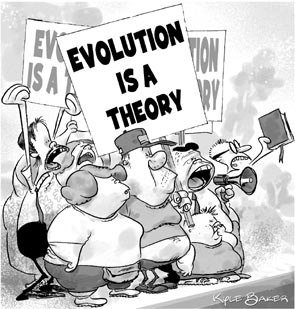

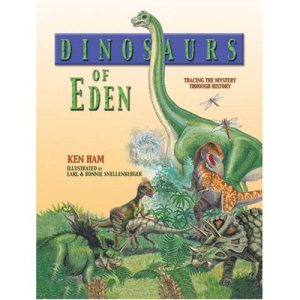


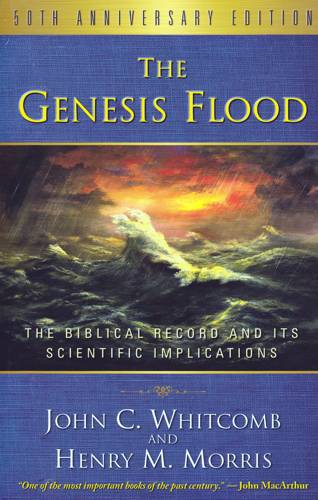





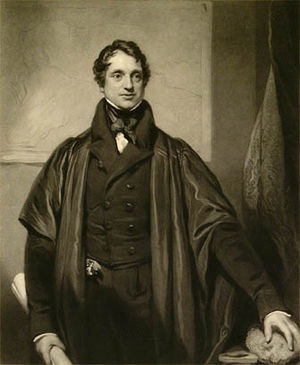
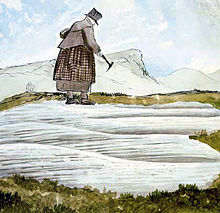





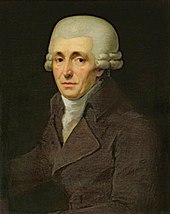


 All this is spelt out in Morris’s 1977 book, The Beginning of the World, most recently reprinted in 2005 (in Morris’s lifetime, and presumably with his approval)…
All this is spelt out in Morris’s 1977 book, The Beginning of the World, most recently reprinted in 2005 (in Morris’s lifetime, and presumably with his approval)…
